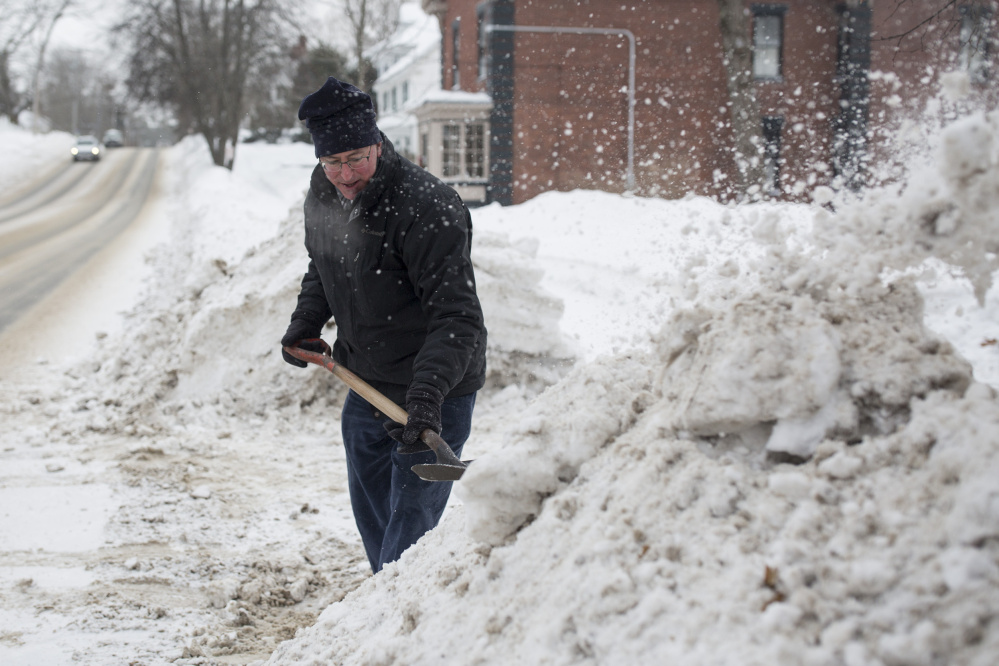The polar vortex was expected to shatter additional temperature records in Maine Saturday night and Sunday morning before gradually giving way to conditions that could seem almost tropical by comparison.
Maine, along with parts of New Hampshire and Vermont, had the dubious distinction of being the coldest region in the continental United States on Saturday.
Portland International Jetport’s high temperature was just 4 degrees, which broke the previous record of the coldest high (10 degrees) for the date set in 1959. And there was a good chance the city would either match or break the 77-year-old record low of minus 10 degrees – set in 1941 – by the time the sun starts to warm up the air on Sunday.
Portland appeared to set the record Sunday morning, with several readings showing negative-11 degrees.
“It’s safe to say we are going to be very close to breaking it, and there are going to be several (records) broken for the date” around the state, said meteorologist Michael Ekster with the National Weather Service’s Gray office.
But warmer days are on their way.
“As for the brutal cold, … this should be it,” Ekster said. “We are actually going to warm up to around 30 on Monday. And there are some signs that, by Friday, it could be up to the mid-40s, which is going to feel like the mid-80s for some people.”
That will be a 60- to 70-degree swing for some areas of Maine.
In Rangeley, for example, Saturday’s high temperature was minus 11 degrees and the mercury was expected to plunge further to minus 20 degrees overnight, with wind chills as low as minus 42 degrees.
And atop Mount Washington – the New Hampshire peak with some of the world’s most extreme weather conditions – the temperature fell to minus 36 in the early-morning hours of Saturday with sustained winds topping 90 mph. In a video posted online by the staff in the Mount Washington Observatory, a soaking wet T-shirt held in the frigid air took roughly 90 seconds to freeze solid.
Around the state, some communities that had opened warming shelters during Thursday’s blizzard kept them open over the weekend for residents needing to escape the cold.
In Portland, social services staff members were once again walking areas of the city where homeless individuals often congregate to encourage them to get indoors. Rob Parritt, director of the city-run Oxford Street Shelter, said thankfully the staff was not finding many people while making the rounds.
“We are serving over 90 people a day at our day shelter and we are pretty much maxed out in the night shelter, which is a good thing,” said Parritt. “We want to be maxed out because that means people are coming in.”
In the event that additional space is needed, Parritt said, the city will work with its nonprofit partners that also offer shelter space.
But Saturday-to-Sunday’s frigid conditions are not expected to come close to the all-time cold temperatures of minus 39 degrees recorded on Feb. 16, 1943, at the Portland airport.
“Other than that, Portland has never been below 25 below,” said Chris Kimble, a meteorologist at the National Weather Service in Gray.
The cold spell has been lengthier than most, thanks to a persistent trough of cold arctic air dropping down into the United States. Usually the temperature drops to minus 10 about twice a year in Portland and other coastal areas. This winter, it has dropped to 10 below three times in December and twice in January so far, Kimble said.
Staff Writer Beth Quimby contributed to this report.
Send questions/comments to the editors.



